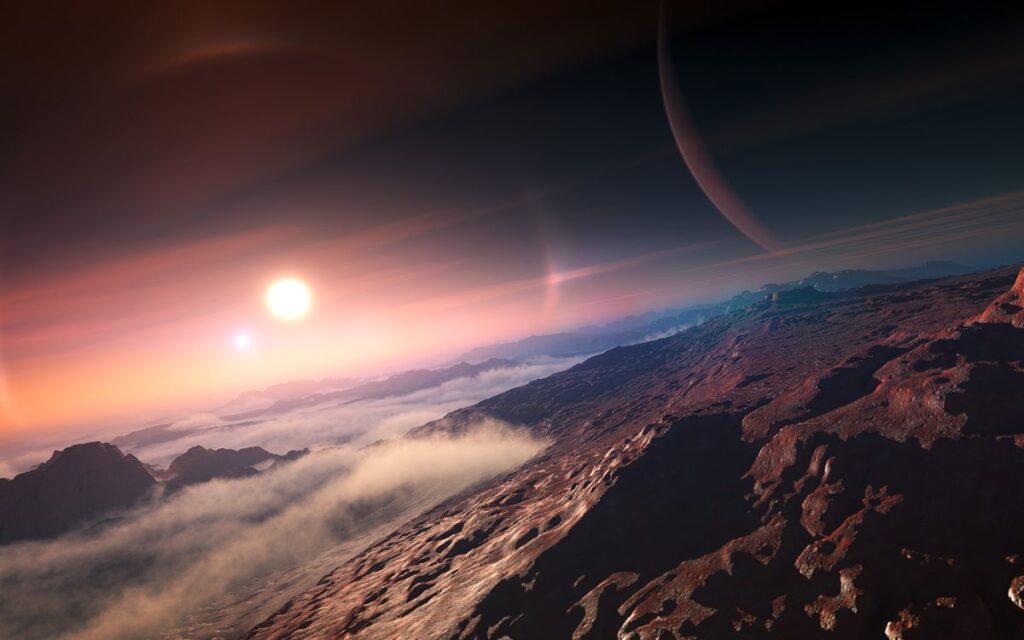With the planned inaugration of the Zeta station on a moon of Brahe in the 55 Cancri system, it became evident, that it was time to design a new breed of transport vehicles to deal with the particular environment of that moon.
The scout team returned praising the moon as the perfect location for the headquarters giving excellent access to 55 Cancri system while being protected from violent solar storms of the binary stars behind Brahe. Brahe itself serves as a source of energy, being a gas giant providing aboundant sources of hydron and helium for the fusion reactors. The orbital dynamics of the moon and Brahe within the binary star system provide easy access to the other planets, the asteroid and Oort Cloud for exploitation. And being the only moon with rocky surface and surface temperatures between -50C to 50C makes it less costly to settle on.

But the moon has one peculiar feature that makes it difficult to actually move around on the moon surface. The dense moon atmosphere has a drastic impact on the fusion drives of the space ships, causing a breakdown of the fusion after 15mins. Initially thought to be a chemical reaction, further research showed that the production of neutrinos within the atmosphere is causing this effect. While a direct launch into space and a direct landing from space are still possible due to time constraints, it is not possible to move around on the moon itself. Once a fusion is interrupted by the neutrinos, the engine must be completely replaced and restarted, which is impossible to accomplish en route. If an incoming spaceship is able to land and turn-off the engines before the 15min mark, the engines can be operated as always. Same applies for take-off, if the spacecraft is able to reach 600km above surface within the 15min mark, no damage nor degradation of the engines has been noted. Longer than 15mins (15 min 14 sec to be precise) and the engine is toast and needs a full replacement.
Thus it was decided to create the new AIR unit, that would use conventional atmospheric lift systems powered by conventional power systems to move around on the moon. In the end, two designs emerged using rotary wings as the lift and thrust sources, based on drone / helicopter designs from Earth.

AIR-2307-SR
The AIR-2307-SR is the first unit being developed and having a first digital prototype. The design is based on the Samson Series from the secret mission to an unknown star. When the Exploration Corporation was looking for a design to base its AIR unit on, the Samson was recommended as durable and easy to maintain system.
The AIR-2307-SR feature the same dual rotorwing system as the Samson Series but with updated engines and more efficient turbines. Equipment with ground penetrating radars as well as microwave spectrometers, the AIR-2307-SR is mainly used for local scouting expeditions to identify mineral deposits worth of extraction.
The instruments can be reconfigured in Search & Rescue mode in case an incoming spaceship did not make to the Zeta station.
AIR4Q-2312-LR
The AIR4Q-2312-LR is a long range quadcopter utilizing the same rotorywings as all other AIR units. The AIR4Q is designed as along distance carry system, that can stays several days in the air without the need to land.
It features a twin cockpit, a bed so one crew member can take a nap during long distance flights and a cargo bay being compatible with the newly introduced airlock standard. Cagounits featuring the new docking system and not larger than 10×8 can be transported around the moon. This can be transportable labs, habitats, communication platforms or, via a crane platform, also smaller spaceships or ground vehicles. If the cargo bay is filled with a coms unit, the AIR4Q can also serve as a communication relay that can stay days on the same spot thanks to its hovering capabilities even in strong storms.


